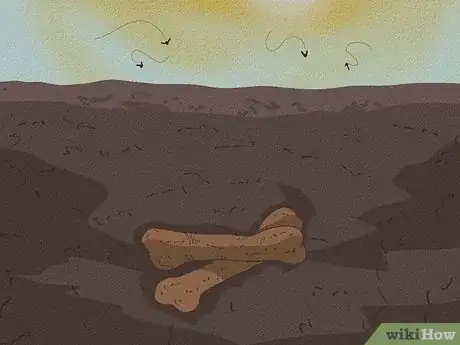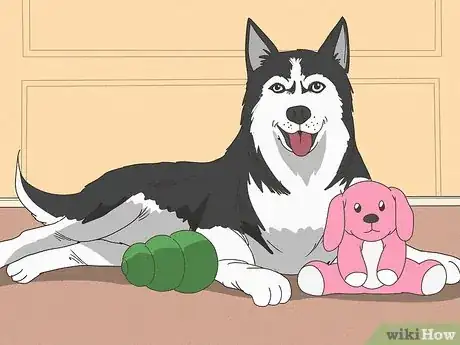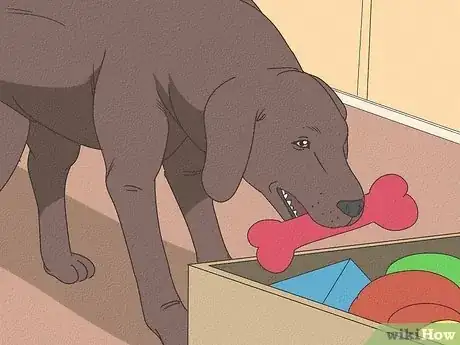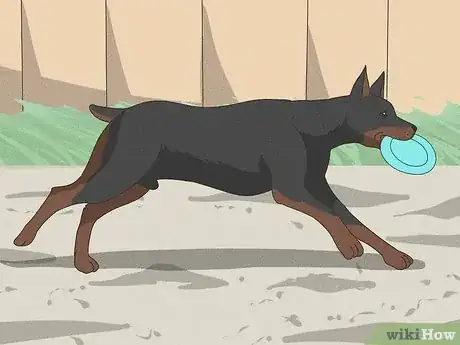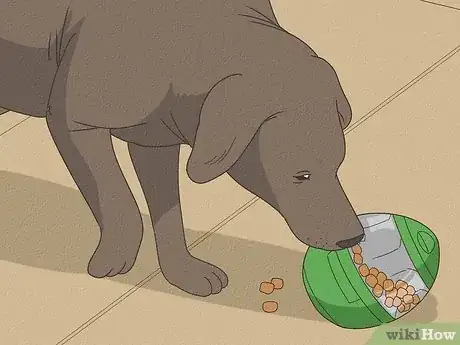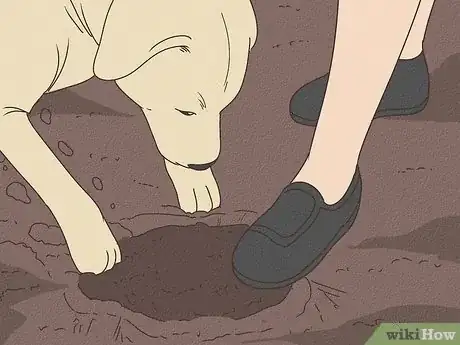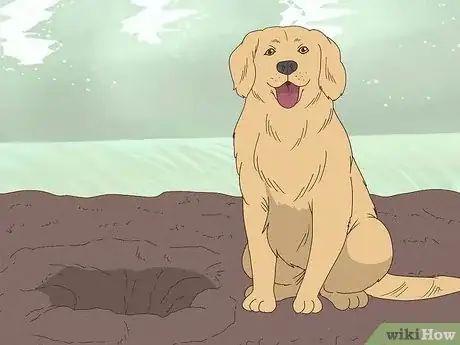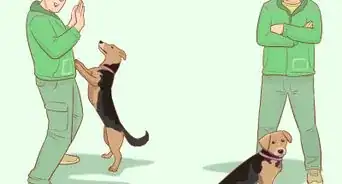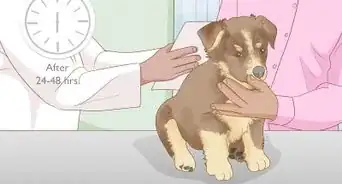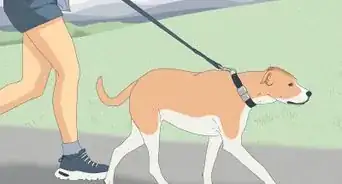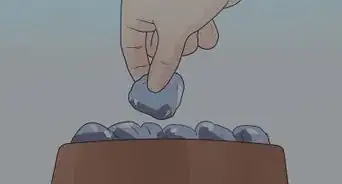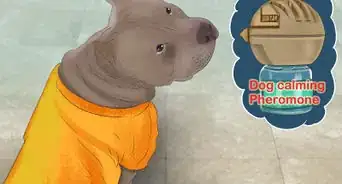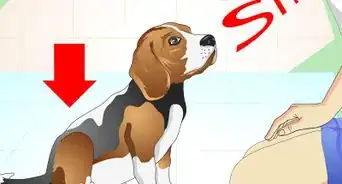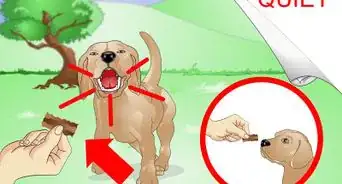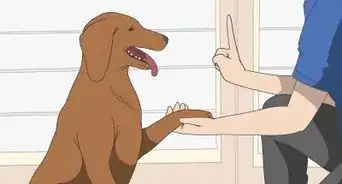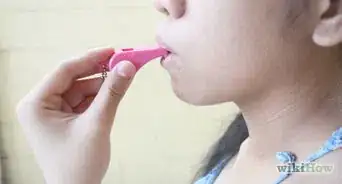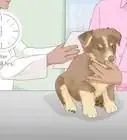This article was co-authored by Corinna Bhasin and by wikiHow staff writer, Dan Hickey. Corinna Bhasin is a Dog Behavior & Training Expert, as well as the Owner of LovePup Training and Care LLC. She specializes in reward-based dog training that is customized to each dog’s personality and needs. She’s a Certified Dog Trainer (CDT) and holds a Master’s Degree from Johnson and Wales University and a Bachelor’s Degree from Nanyang Technological University in Singapore.
There are 10 references cited in this article, which can be found at the bottom of the page.
You’re getting ready to show off your beautiful garden to some friends when you notice a suspicious, doggy-sized hole in the middle of your petunias with a rawhide bone at the bottom. Is this normal dog behavior, or does your pooch have a grudge against flowers? The urge to bury bones is rooted in survivalistic instincts and is more prominent in some breeds than others (and no, it’s not because your dog has a vendetta against perfectly manicured lawns). In this article, we’ll show you where that instinct comes from and help you curb your pup’s digging habits if your yard is starting to look like a graveyard for chew toys. With a few adjustments to your dog’s meal and playtime routines, saving your yard is a cinch!
Things You Should Know
- Dogs got the instinct to bury bones from their wolf ancestors, who bury food for storage and preservation. Some dogs also just bury things for fun or out of anxiety.
- Curb your dog’s burying habit by limiting how many toys they have at once, supervising meal times, or designating a digging zone for them to enjoy.
- All dogs have the burying instinct, but hunting breeds dig more often. It’s a safe impulse unless your lawn is chemically treated or their paws are injured.
Steps
Warnings
- Offer your dog a rawhide bone instead of an actual animal bone. Real bones can damage your dog’s teeth, splinter and cut their mouth, or even make them choke.[16]⧼thumbs_response⧽
Expert Interview
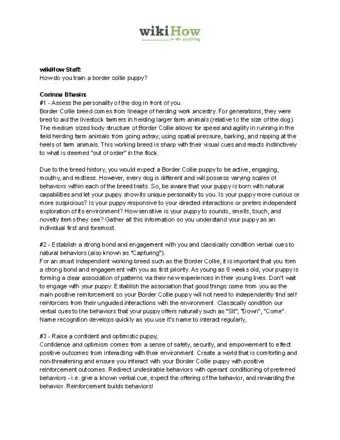
Thanks for reading our article! If you'd like to learn more about dog behavior, check out our in-depth interview with Corinna Bhasin.
References
- ↑ https://www.vetstreet.com/our-pet-experts/why-does-my-dog-bury-bones
- ↑ https://petkeen.com/why-do-dogs-bury-bones/
- ↑ https://www.hillspet.com/dog-care/behavior-appearance/why-do-dogs-bury-things
- ↑ https://www.akc.org/expert-advice/training/why-is-my-dog-hiding-things/
- ↑ https://www.akc.org/expert-advice/training/why-is-my-dog-hiding-things/
- ↑ https://www.masterclass.com/articles/why-do-dogs-bury-their-food
- ↑ https://www.humanesociety.org/resources/stop-dogs-digging
- ↑ https://www.dailypaws.com/living-with-pets/pet-friendly-home/why-dog-digs
- ↑ https://www.humanesociety.org/resources/stop-dogs-digging
- ↑ https://www.dailypaws.com/living-with-pets/pet-friendly-home/why-dog-digs
- ↑ https://petkeen.com/why-do-dogs-bury-bones/
- ↑ https://www.pbs.org/wgbh/nova/article/dogs-sense-of-smell/
- ↑ https://www.hillspet.com/dog-care/behavior-appearance/why-do-dogs-bury-things
- ↑ https://www.westparkanimalhospital.com/blog/hot-diggity-dog-why-dogs-dig-and-what-to-do-about-it/
- ↑ https://www.humanesociety.org/resources/stop-dogs-digging
- ↑ https://vcahospitals.com/know-your-pet/why-bones-are-not-safe-for-dogs

